You can seal homemade tea bags using several simple methods. The heat-sealing technique involves using an iron and parchment paper to melt the bag's adhesive. For a quick fix, try the stapling method with food-safe staples. An adhesive tape approach works well with food-grade tape for a secure seal. If you prefer a traditional look, use the string and knot closure method. Alternatively, the folding and ironing technique creates neat, store-bought-like tea bags without additional materials. Each method offers its own advantages, from ease of use to aesthetic appeal. Exploring these techniques will help you find the perfect sealing solution for your homemade tea bags.
Heat-Sealing Technique
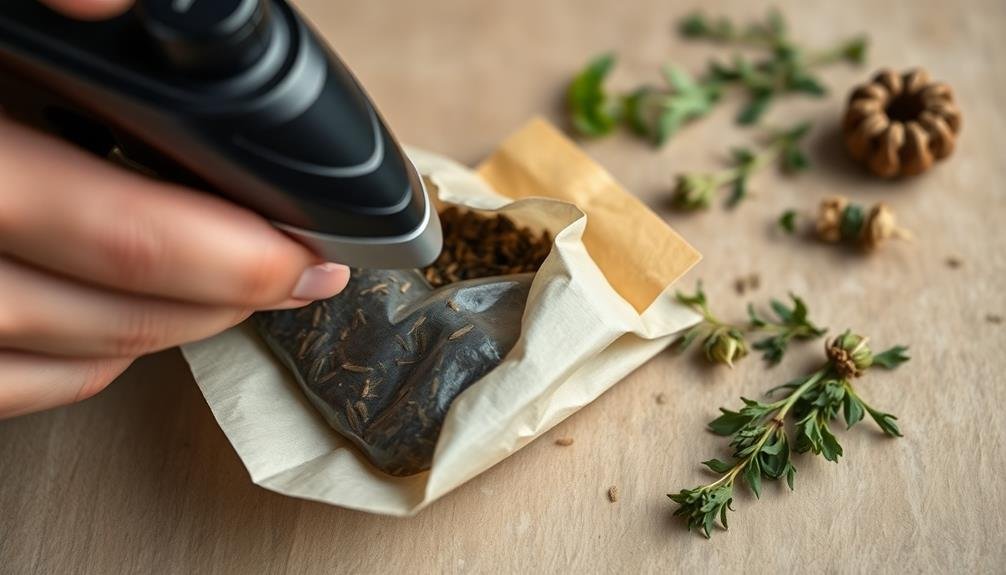
The heat-sealing technique is a popular method for closing homemade tea bags. You'll need a few key items: empty tea bags, an iron, and parchment paper.
Begin by filling your tea bag with your chosen blend of loose tea leaves. Once filled, fold the open end of the bag over about a quarter-inch.
Place the folded edge between two pieces of parchment paper. Set your iron to a medium-high setting without steam. Press the iron firmly onto the parchment paper covering the folded edge for about 3-5 seconds. The heat will melt the adhesive in the tea bag, creating a seal.
After sealing, let the bag cool for a moment before handling. Check the seal by gently tugging on the edges. If it's not fully sealed, repeat the process.
Be careful not to overheat, as this can burn the bag or affect the tea's flavor.
This method works well for paper tea bags with a heat-activated adhesive. It's quick, efficient, and doesn't require special equipment beyond a household iron.
You'll have professional-looking, securely sealed tea bags ready for steeping or gifting.
Stapling Method
Simplicity reigns supreme with the stapling method for sealing homemade tea bags. This technique requires minimal tools and is perfect for beginners or those looking for a quick solution. You'll need a small stapler and your filled tea bags to get started.
Begin by folding the top edge of your tea bag down about half an inch. Make sure the fold is crisp and even. Next, take your stapler and place it near one edge of the folded section. Press firmly to secure the first staple.
Repeat this process on the opposite side of the bag, ensuring both staples are equidistant from the edges. For added security, you can place a third staple in the center of the folded section. This helps prevent any loose tea from escaping.
If you're using larger tea bags, consider adding more staples along the fold for extra reinforcement. Remember to use food-safe staples if possible, though regular staples are generally safe for brief contact with hot water.
When it's time to use your tea bag, simply remove the staples before steeping. This method is cost-effective, quick, and requires no special equipment, making it an excellent choice for home tea enthusiasts.
Adhesive Tape Approach
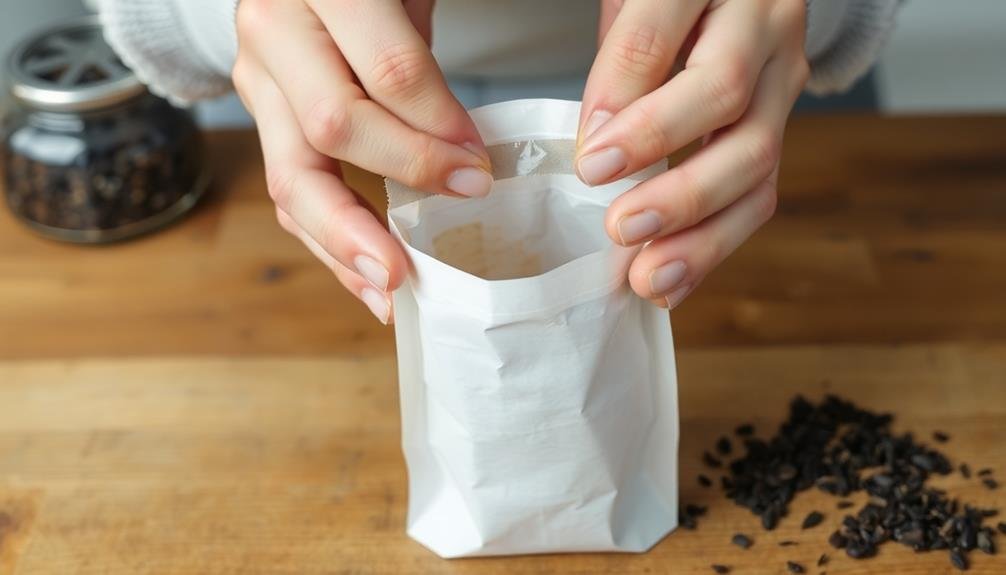
Another popular method for sealing homemade tea bags is the adhesive tape approach. This technique is simple, effective, and doesn't require any special tools. To use this method, you'll need food-safe adhesive tape, which is readily available in most craft or kitchen supply stores.
Start by folding the top edge of your tea bag over about half an inch. Make sure the fold is crisp and even. Next, cut a small strip of food-safe adhesive tape, slightly longer than the width of your tea bag. Carefully apply the tape along the folded edge, ensuring it's centered and sticks well to both sides of the bag. Press firmly to create a tight seal.
For added security, you can fold the taped edge over once more and apply another strip of tape. This double-seal technique is especially useful for larger tea bags or those containing finer tea particles.
Remember to leave enough room at the top for a string if you're planning to attach one. The adhesive tape approach is versatile and works well with various tea bag materials, including unbleached paper filters and muslin cloth.
String and Knot Closure
While adhesive tape offers a quick sealing solution, some tea enthusiasts prefer a more traditional approach. The string and knot closure method provides a classic look and feel to your homemade tea bags. To use this technique, you'll need food-safe string and a bit of patience.
Start by cutting a piece of string about 6 inches long. Fold your tea bag's opening over itself, creating a small flap. Place the string along the folded edge, leaving a tail on one side for steeping. Carefully tie a tight knot around the folded portion, ensuring the tea leaves are securely enclosed. You can double-knot it for extra security.
For a neater appearance, trim any excess string. If you'd like a tag, cut a small piece of paper and attach it to the free end of the string. This method works well with various tea bag materials, including muslin, cotton, or disposable filter paper.
Remember to use only food-safe, unbleached string to avoid any unwanted flavors or chemicals seeping into your tea.
With practice, you'll perfect this technique, creating charming, functional tea bags that enhance your tea-drinking experience.
Folding and Ironing Technique
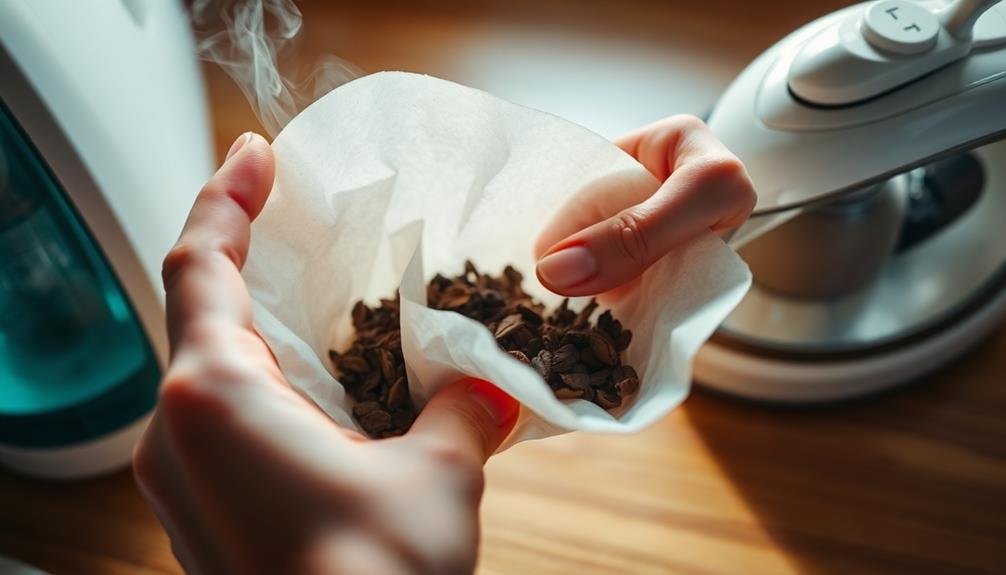
The crisp edge of a well-sealed tea bag can be achieved through the folding and ironing technique. This method creates a secure closure without the need for string or adhesive.
To begin, place your loose tea in the center of a square piece of filter paper or empty tea bag material. Fold the edges of the paper over the tea, creating a neat rectangular package.
Next, heat your iron to a medium setting without steam. Carefully press the iron along the folded edges for a few seconds, sealing them together. Be sure to avoid direct contact with the tea itself. The heat will fuse the layers of paper, creating a tight seal.
Here's why this technique is effective:
- It creates a professional-looking finish
- The seal is strong and prevents tea from escaping
- You don't need any additional materials besides an iron
Remember to let the tea bag cool completely before use. This method works well for single-serve bags or larger quantities.
You'll find that the folding and ironing technique produces reliable, attractive tea bags that rival store-bought versions. It's a simple yet effective way to elevate your homemade tea experience.
Frequently Asked Questions
How Long Can Homemade Tea Bags Be Stored?
You can store homemade tea bags for up to six months if they're properly sealed and kept in a cool, dry place. Confirm they're completely dry before storing, and use airtight containers to maintain freshness and prevent moisture absorption.
Can I Reuse Homemade Tea Bags?
You can reuse homemade tea bags, but it's not recommended. The flavor will be weaker with each use. If you do reuse them, limit it to one additional steeping. It's best to use fresh tea bags for ideal taste.
What Are the Best Materials for Making Homemade Tea Bags?
You'll want to use food-safe, heat-resistant materials for homemade tea bags. Consider unbleached cotton muslin, cheesecloth, or empty disposable tea filters. For a sustainable option, try organic cotton or hemp fabric. Avoid synthetic materials that may leach chemicals.
Are Homemade Tea Bags More Environmentally Friendly Than Store-Bought Ones?
You'll find homemade tea bags can be more eco-friendly than store-bought ones. You're reducing packaging waste and controlling materials. You'll often use biodegradable options, avoiding plastic and harmful chemicals. It's a greener choice for tea lovers.
Can I Use Homemade Tea Bags for Cold Brewing?
Yes, you can definitely use homemade tea bags for cold brewing. They're perfect for this method. Simply place your homemade tea bag in cold water, refrigerate overnight, and you'll have a revitalizing cold-brewed tea in the morning.
In Summary
You've now got several easy methods to seal your homemade tea bags. Whether you're using heat, staples, tape, string, or an iron, you'll be able to create secure, leak-free bags for your favorite tea blends. Don't be afraid to experiment with different techniques to find what works best for you. With these simple sealing methods, you're ready to enjoy your custom tea creations anytime, anywhere. Happy brewing!


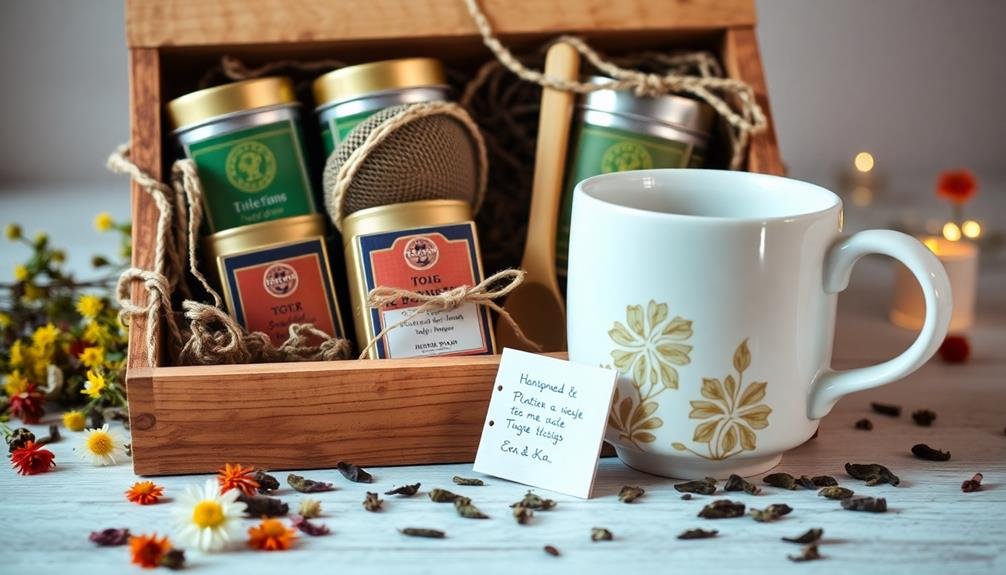
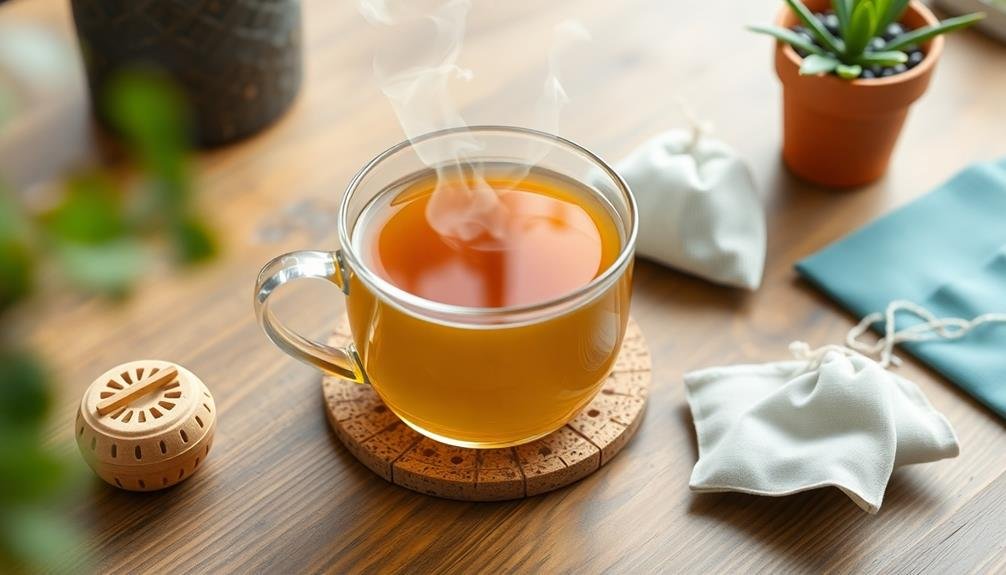
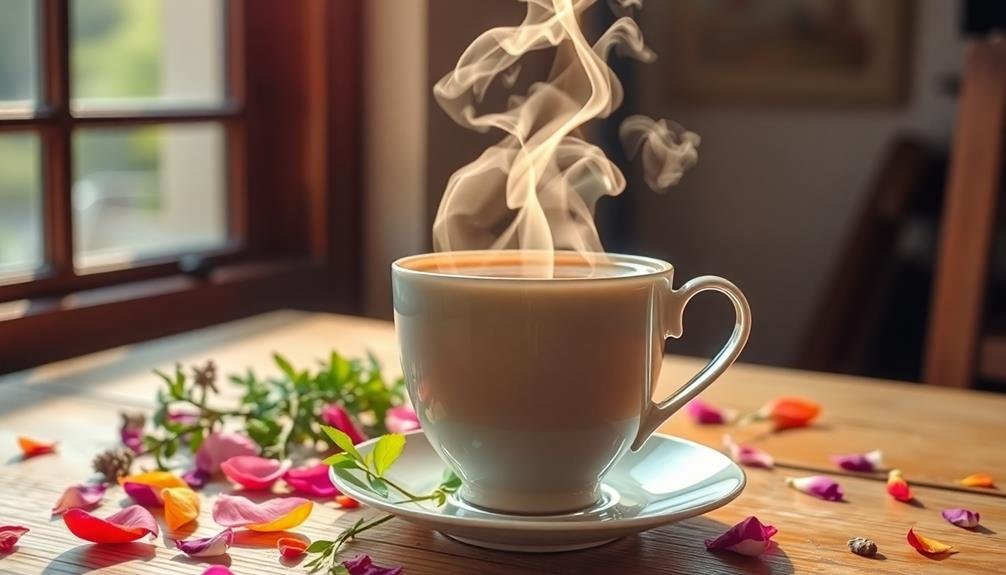
Leave a Reply